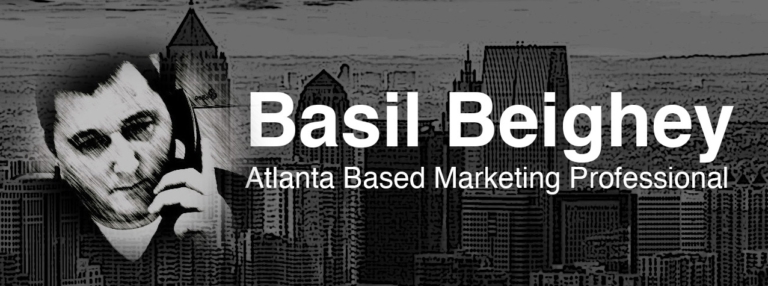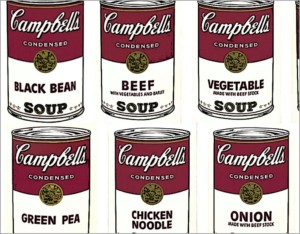Paul Huling was the best salesmen I’ve ever met. Paul was a legend at Gary Miller Chrysler Plymouth on Peach Street in Erie, Pennsylvania. The rumor was that he had been fired and re-hired something like twenty-six times by the General Manager.
I’d heard about Paul for a long time before I actually met him. It was Summer, 1984 and I decided that I wanted to learn how to “sell,” so I took a job as a salesman at “Gary Miller, the Detroit Discount Dealer.” After a month of training and four months on the lot, I thought I was a pretty good salesman. After all, I made new car “Salesmen of the Month” two out of the four months, selling between five and seven new cars each month. Then I met Paul.
The Autumn of 1984 was not a particularly good time to be selling cars – especially Chryslers. Lee Iacocca was on TV nightly begging people to test drive the new “K” car – aka. the Dodge Aries and Plymouth Reliant. At that time, Chrysler was emerging from the brink of bankruptcy and the “K” car represented it’s last-gasp-shot at re-capturing enough market share to turn things around. Reagan-economics hadn’t really taken hold yet and Pennsylvania was still in the depths of a major recession. It was against this dismal economic backdrop that Gary Miller’s new car manager and general manager decided that new car sales needed “jump-starting” and the decision was made to re-hire Paul for something like the 27th time.
The showroom was abuzz at the news of Paul’s impending return. It seemed, at least, from water cooler conversation, that Paul was universally hated at the dealership. No one had a kind word to say regarding his attitude or demeanor. Even the managers trembled at the prospect of “managing” this rogue menace. I listened intently to the gossip and stories of Paul’s previous antics. One salesman told of his epic gambling binges, another talked about his drinking, yet another told of his steamrolling dealership policy. But after listing to everyone, I really couldn’t pin down exactly why everyone seemed to hate him so much. After all, wasn’t charging a car salesman with drinking and gambling, was like charging the Pope with piety? Eventually, I decided it was simple jealousy toward a man who reportedly could easily sell twice the number of cars as the second place salesmen.
On the morning of Paul’s first day, I waited and watched intently. My curiosity was becoming overwhelming. What would this legendary salesperson look like? What would he say? What could I learn from him? Would he talk to a newbie, peon like me?
Finally, I heard a deep, loud, boisterous, voice boom from the other side of the showroom and someone said: “Hi Paul.”
I sprang from my desk and rushed toward the conversation to get a look at “the legend.” Over the top of a Laser coupe, I caught sight of the “super salesperson.” I was shocked! He was nothing like what I had imagined. He was a really average looking guy of average height, dressed in gray slacks, smartly shined, oxford shoes, white shirt, tie, and a blue, v-necked sweater. He had a round, red face, thick, pop-bottle, glasses, and thinning close-cropped hair. Through his thick, black-rimmed glasses, his eyes always seemed to be squinting. But his dominant feature was a contagious smile that stretched from ear to ear.
He wasn’t what I had imagined, but I liked him immediately. He seemed very friendly and seemed to have something endearing to say to everyone he recognized at the dealership. I was having a hard time reconciling the stories I had heard with this seemingly friendly guy. I introduced myself, welcomed him, and offered assistance on his re-acclimation. He thanked me and took to calling me “B.J.”
Over the next few days, I made it my mission to observe Paul and discover his secrets for selling. I’d imagined that he must have been an expert on cars in general and especially, Chryslers. He must know the intricate details regarding option packages, horsepower ratings, wheelbase measurements, curb weights, and gas mileage of every model on the lot. Surely he must be able to field any question regarding our product offerings by drawing from his vast knowledge and experience accumulated over years of professional selling. He must surely carry a mental inventory sheet of the make, model, option packages, and price of every car on the lot. After all, hadn’t I made it my mission to learn everything about our products and inventory? Hadn’t my product knowledge been a major factor in winning two “Salesmen of the Month” awards?
I also imagined that anyone that was so good at selling Chryslers must love automobiles and subsequently, love Lee Iacocca, and his mission to bring “The New Chrysler Corporation” back from near extinction. He must be passionate about his job, his products, the dealership, and Chrysler.
I was dead wrong on both assumptions. After befriending Paul and observing him over the following weeks, I was astounded to learn how little Paul actually knew about cars and how little he cared about the dealership or Chrysler. In fact, during Paul’s first week, he had to consult the brochure rack more than a few times just to remember what models we offered! “How could this be?” I wondered. I knew everything about our cars and I was extremely passionate about Chrysler. How could this guy sell so many cars and seemingly not care whether they were Chryslers or John Deere tractors? How could he be so successful without knowing anything about the products?
I had to know more. I secretly hid behind vehicles and listened intently to Paul’s “pitch” as he interacted with customers. After a few days, I finally realized why Paul was so successful, and why everyone at the dealership seemed to hate him. To Paul, the product was simply a solution to a customer’s need – he had no passion for it or opinion about it. He was completely neutral regarding make, model, dealership, or company. In fact, he didn’t really work for “Gary Miller” at all, he worked for his customer and himself. His lack of passion and loyalty for the dealership and company bred contempt from fellow employees who regarded his success as an assault on the status quo. “Who does he think he is?” salespeople would say joking about his lack of loyalty and independent nature.
But his neutrality and friendly demeanor endeared him to his customers. He always spent the first few minutes questioning new customers intently regarding their transportation needs. He really listened and made mental notes of what seemed important to that particular customer. Then he set himself to find the car that met those needs. He didn’t judge, he didn’t give an opinion, he didn’t elaborate, he didn’t speculate, he didn’t pontificate. He just got the customer what he or she wanted. His neutral regard for makes, model, options, etc. put customers at ease – he didn’t seem to have any agenda except to find that particular customer the car they wanted. He had no passion for the product, but he sold a lot of cars and made a lot of money. In the following month when the second best salesmen (me) sold seven cars, Paul sold twenty-six.
After a while, I began to regard Paul as a consummate salesman. He simply made it his business to get people what they wanted without regard, judgment, passion, or opinion. Making the sale was all that mattered. Giving the customer what he wanted was paramount. Paul personified in my mind the “pure” businessman and my observations of Paul led me to formulate my theory of the “Artist-Businessman Continuum.”
Simply put, my theory states that in their pure state, artists and businessmen represent two opposite poles on a mutually exclusive continuum. To the extent that you are one, you are not the other.
At the one end of the continuum, you have the pure artist. The pure artist is only concerned with realizing his vision of the world. He does this, not for profit, but for the sake of his own sanity. He writes he paints, he sculpts, he pontificates, he creates whatever he wants without regard for marketability. He doesn’t care whether anyone else likes it and he doesn’t spend any time trying to explain it to others. He really doesn’t care if you “get it” or if you don’t. It’s his personal vision and he created it for himself. He has no choice but to bring his vision to life or he will spiral toward insanity.
Consequently, he doesn’t sell much of his work or make much money. He is the “starving artist” and must to be by definition. any commercial success the true artist realizes is coincidental. If he alters his work to suit the marketplace, he’s “selling out” by giving someone what they want, rather than staying true to his personal vision.
At the other end of the continuum resides a slightly more extreme version of Paul – the pure businessman. The pure businessman’s only vision is getting the customer what he wants. He believes that the product is only a means to an end, and that end is satisfying a customer’s need. He does this without considering whether that need is real or imaginary. He forms no opinion, makes no judgment, garners no passion, and he defends no position. He is truly impartial to both the customer’s preferences and the products attributes. He may have no “soul,” but he gets rich.
Let me say that neither of these stereotypes really exist. They only serve to mark the extreme poles of the Artist-Business Continuum. The important thing to understand is that the poles are mutually exclusive; that is, to the extent you are one, you are not the other. I believe that each of us lies somewhere on the continuum. It follows then that each of us is imbued with the qualities of each of the two stereotypes.
So much for my story of Paul.
By this time you may be beginning to understand what “Paul” and my theory regarding the Artist-Businessman Continuum has to do with the title of this article – “Commercial Art is an Oxymoron.” I believe that “commercial” and “art” are polar opposites. More accurately, commercial art is commercial communication that uses good, efficient, tasteful, design to deliver a message that hopefully motivates a potential customer to some action and usually that action is to buy something.
As a “commercial artist,” I try to never lose sight of the fact that I’m always selling something. That “something” may be a product, a service, an idea, a political view, or a way of life. But selling is commercial – not art. Clio awards are great, but paying customers are better. I spend my days employing my design skills and creativity to make my customers happy by communicating the virtues of their products. This hopefully makes them more commercially and financially successful (which hopefully leads to more business for me).
Ok, maybe I’m slightly “left of center.” But when push comes to shove, my customers get what they want – and that’s that. I then stay up late at night and write these silly articles on my own time to amuse myself and practice my “art.” … 🙂





